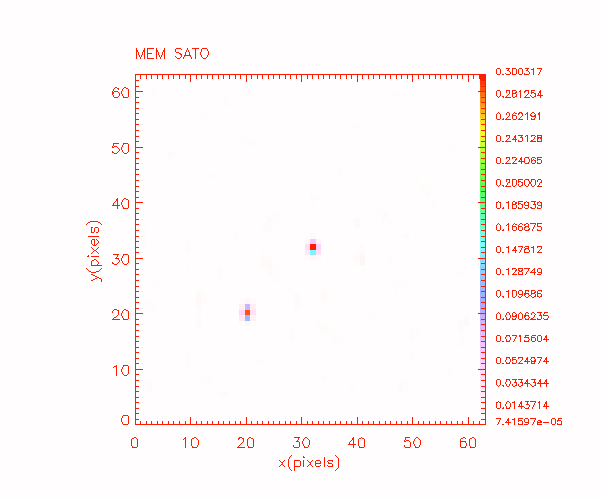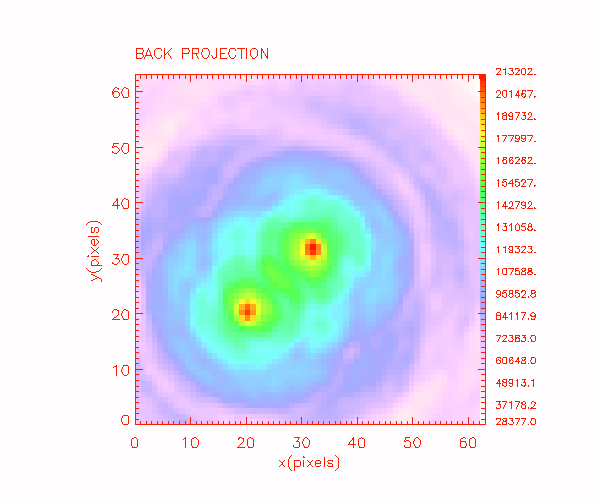MAXIMUM ENTROPY METHOD
Hsi_mem_sato is the implementation of the MEM algorithm used to obtain images for the Yohkoh HXT. The algorithm is identical, the instruments are different.
Differences between HXT and HESSI Analysis
- Energy Range and resolution: HXT has 4 channels, 10 to 40 keV resolution. HESSI has 8192 channels, and any choice of energy resolution down to a keV at low energies.
- Modulation Patterns: HXT has 64 detectors, each image is synthesized using 64 modulation patterns. HESSI has 9 detectors, but it rotates; the default number of modulation patterns for a HESSI image is 17792. The modulation pattern matrix (n_patterns, n_pixels^2) used for image synthesis is too large to be held in memory, so it is stored on the disk, and is read out as needed. This slows down the program, but not very much.
- Speed: Nevertheless, the HESSI MEM routine is very slow, due to the sheer size of the matrix and the number of matrix multiplications needed. For each iteration, MEM needs 2 profiles (mod_pattern_matrix#test_image) and 1 back projection (test_modulation_profile#mod_pattern_matrix). For example, each of these operations is 30 sec on an Ultra 10. There can be 100's of iterations. A full resolution image takes hours. Images are faster on PC's due to faster i/o.
The image Quality is good: Here is a comparison of an image of the default HESSI image of two gaussian footpoint sources of 2 arcsec width at [600, 200] arcsec from the center of the Sun. The image has 64X64 pixels, and 2 arcsecond pixels. First the MEM image, then the Back-projection image, then the CLEAN image. 


The MEM image is better, but at a cost of hours.
16-Oct-1999, jmm





